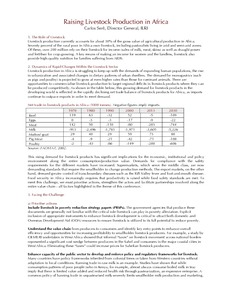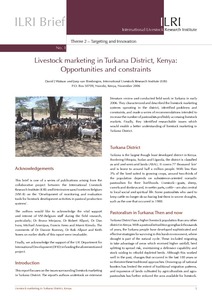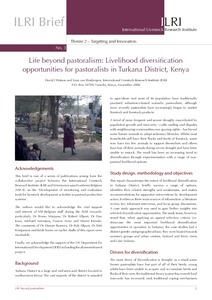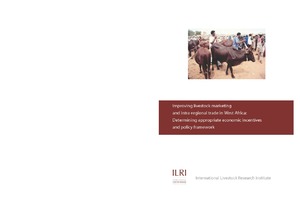Location
Vision, mission and strategy
ILRI's strategy 2013-2022 was approved in December 2012. It emerged from a wide processof consultation and engagement.
ILRI envisions... a world where all people have access to enough food and livelihood options to fulfil their potential.
ILRI’s mission is... to improve food and nutritional security and to reduce poverty in developing countries through research for efficient, safe and sustainable use of livestock—ensuring better lives through livestock.
ILRI’s three strategic objectives are:
- with partners, to develop, test, adapt and promote science-based practices that—being sustainable and scalable—achieve better lives through livestock.
- with partners,to provide compelling scientific evidence in ways that persuade decision-makers—from farms to boardrooms and parliaments—that smarter policies and bigger livestock investments can deliver significant socio-economic, health and environmental dividends to both poor nations and households.
- with partners,to increase capacity among ILRI’s key stakeholders to make better use of livestock science and investments for better lives through livestock.
This is ILRI’s second ten-year strategy. It incorporates a number of changes, many based on learning from the previous strategy (2000–2010, initially produced in 2000 and modified in 2002), an interim strategy (2011–2012) and an assessment of the external and internal environments in which the institute operates.
Members:
Resources
Displaying 766 - 770 of 1152Perspectives on development in Arid and Semi-Arid areas: Results of a ranking exercise
Livestock marketing in Turkana District, Kenya: opportunities and constraints
This report focuses on the issues surrounding livestock marketing in Turkana District. The report 's authors undertook an extensive literature review and conducted field work in Turkana in early 2006. They characterized and described the livestock marketing systems operating in the district, identified problems and constraints, and made a series of recommendations intended to increase the number of pastoralists profitably accessing livestock markets. Finally, they identified researchable issues which would enable a better understanding of livestock marketing in Turkana District.
Life beyond pastoralism: livelihood diversification opportunities for pastoralists in Turkana District, Kenya
This report characterises the extent of livelihood diversification in Turkana District, briefly surveys a range of options, identifies their relative strengths and weaknesses, and makes recommendations for supportive interventions by development actors. It relies on three main sources of information: a literature review, key informant interviews, and focus group discussions. A case study approach was used to gain further insights into selected diversification opportunities. The study team, however, noted that, when applying an agreed selection criteria (i.e.





